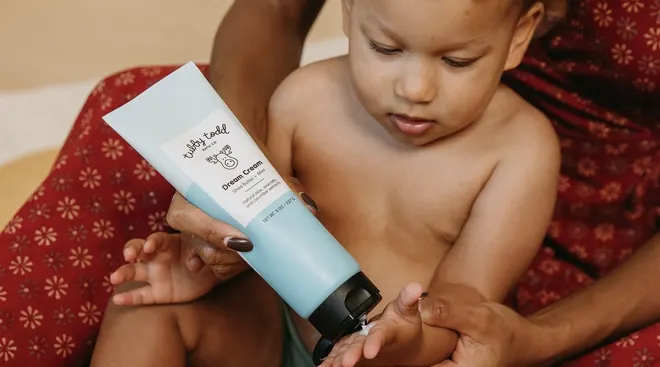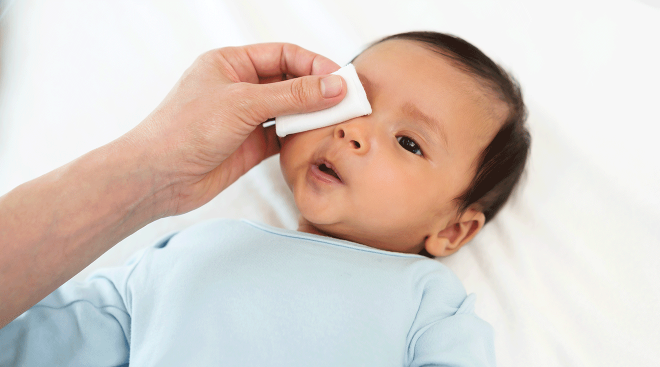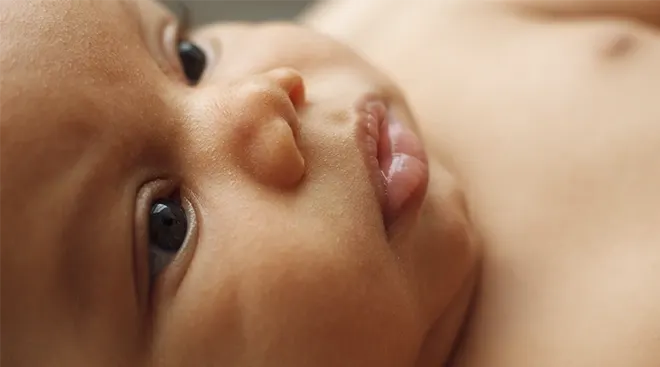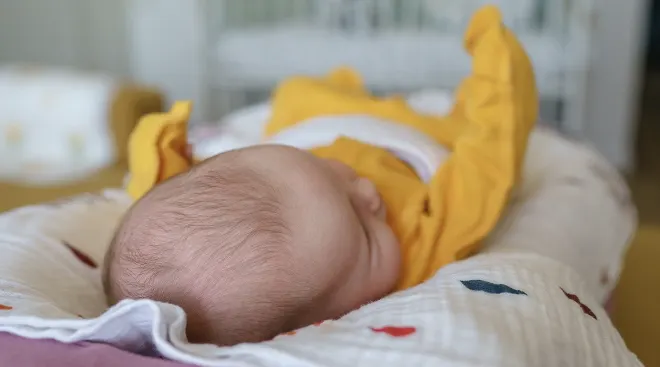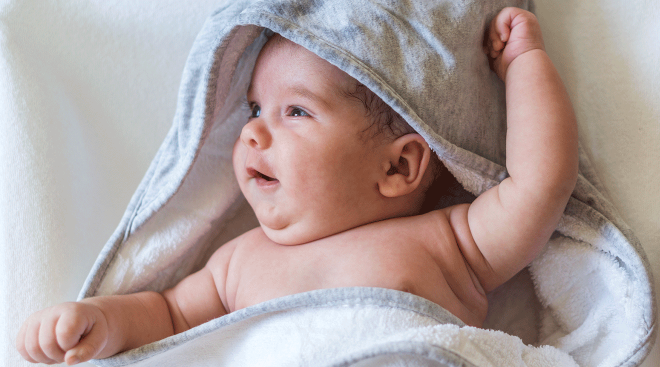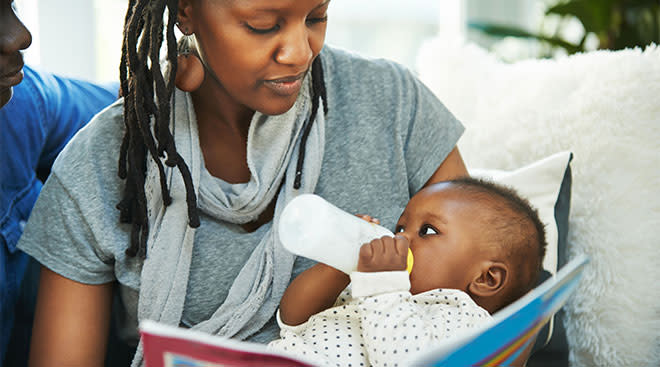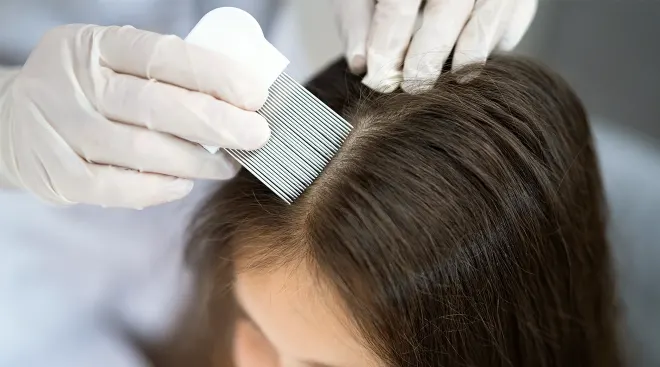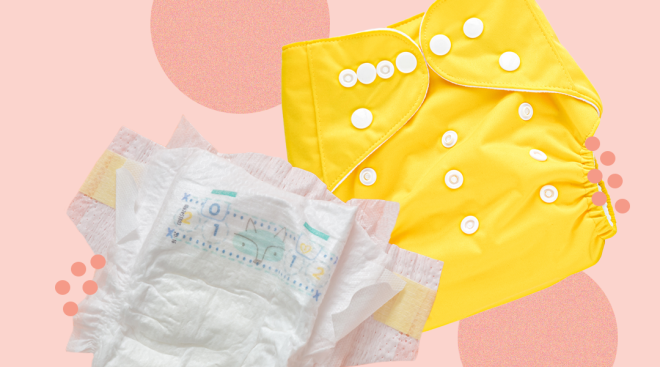How to Care for Your C-Section Scar
Many moms who have delivered their babies via cesarean section have a love-hate relationship with their c-section scar. “I don’t like having a scar, but when I see it I’m reminded that I brought four healthy children into the world,” says Megan C. in New York, who delivered each of her four children via c-section. “It’s like a badge of honor.”
C-section scars are marks left on a mother’s belly following the surgical procedure used to deliver a baby through incisions made in the abdomen and uterus; for some women, they may fade quietly over time. For others, the scar might bulge, stay red or remain overt in other ways. Still, regardless of appearance, some moms say their scar is an unwelcome souvenir from what they consider a less-than ideal birth experience. “If you’re still grieving the [vaginal] birth you wanted, that c-section scar is a reminder of what you didn’t get,” says Rebekah Mustaleski, CPM, a midwife in Knoxville, Tennessee.
The empowering truth is that your c-section scar is a prime emblem of motherhood and the remarkable feat your body accomplished.
Whether you end up having a c-section by choice or necessity, knowing what to expect postpartum and how to foster healing (physically and mentally) can help set the stage for recovery. Want to know what your c-section scar may look like, how to care for it during the healing process and the scar-minimizing steps you can (and can’t) take in the coming weeks? Read on for the full lowdown.
Typically, a c-section scar is small (about 4 to 6 inches) and pink, but there are several factors that can affect its appearance. How your scar turns out mostly depends on your body type and c-section incision type.
Types of c-section incisions
The biggest factor that ultimately affects how your c-section scar looks is the type of incision your ob-gyn uses to deliver baby. Here are the most common types of c-section incisions:
• Transverse c-section scar. It’s standard practice for OBs to use the Pfannenstiel incision—more commonly called a bikini cut—low on a patient’s belly, says Courtney Barnes, MD, an ob-gyn at University of Missouri Health Care. “Cosmetically it just looks better,” she says. It’s typically about 4 or 5 inches long and situated below your underwear line. Most importantly, this type of c-section scar is less likely to rupture during later pregnancies.
• Vertical c-section scar. Known as a classical cesarean section, this 4- to 5-inch up-and-down cut allows OBs quicker access to baby during an emergency and easier access to a preterm baby. “For women who are morbidly obese, they’ll have less wound infection and problems with a vertical incision,” says Barnes. In the event of a pregnancy complication that results in having to do a hysterectomy at the same time, the vertical cut makes the procedure easier, according to research.
How c-sections are closed
Each surgeon has their own style of closing the wound, notes Barnes, and most techniques used today foster scar healing, helping to minimize the mark over time. “Patient satisfaction-wise, the preference is something that doesn’t have to be removed,” she says. Stitches that dissolve on their own are common, as is Dermabond glue. As long as the patient isn’t allergic to adhesive, some doctors use tape like Steri-Strips, which fall off on their own after a couple of weeks.
Some OBs may still use staples to close a c-section incision if there’s a concern of bleeding. But research shows that using sutures instead of staples leads to fewer complications—namely wound separation.
Types of c-section scars
How your c-section scar will look once it’s healed also depends on your age and body type, says Barnes. The biggest outcome predictor is how other scars on your body have healed. While many women will see their c-section scar thin out and gradually fade in color over time, some scars will protrude and remain reddish or purple for longer. These types of c-section scars are more stubborn:
• Keloid c-section scar. Your body may be predisposed to keloid scars, where the tissue extends beyond the c-section incision or looks lumpy and doesn’t smooth out over time. In this case, “we can do some steroid injections when we’re managing the wound,” says Barnes. “We can also apply pressure to the wound to help it from becoming hypertrophic—when it thickens.”
• Hypertrophic c-section scar. A hypertrophic scar becomes thick and hard but doesn’t stray beyond the edges of your original incision line. Silicone sheets or strips may help minimize scars over time, says Barnes, but you don’t want to use them until your incision has completely healed.
• C-section scar overhang. The shelf of skin, or “pooch,” that some women have hanging over their c-section scar can be tough to lose via diet and exercise. This is actually the result of the scar sticking to your abdominal muscle, making it unable to move freely as it would if it wasn’t adhered. The stretched skin of your belly and the fat above your scar become more noticeable.
Your c-section incision is going to be pretty sore for at least two to three weeks post-surgery, says Mustaleski. The Birth Injury Health Center explains the three c-section scar healing stages:
• 1. Inflammatory stage. Lasting for the first few days after a c-section, this is when bleeding stops and white blood cells gather at the site to guard against infection. Your incision will be swollen and red or pink.
• 2. Proliferative stage. During this next three- to four-week phase of healing, collagen gathers at the incision to strengthen and pull it together at the edges. New blood vessels form, and your c-section scar will get thicker and change color as it recedes.
• 3. Remodeling stage. This final stage of healing can last up to a year, during which time your thick, puffy scar tissue flattens and fades in color.
About six to eight weeks after baby’s birth, your c-section incision should be completely healed, and you’ll be able to gradually resume most of your normal activities, including exercising, driving and lifting items heavier than baby.
Before you leave the hospital, be sure to write down any wound-care instructions your nurse or ob-gyn gives you. You may have received a pain medication prescription to help you through the first couple of weeks, when the incision site will be most sore. According to Mustaleski, other steps you can take to care for your c-section incision include:
• Over-the-counter pain medication. Check with your healthcare provider for the correct dosage and combination of ibuprofen and acetaminophen.
• Avoid scrubbing your c-section incision site. While it’s healing, let warm water run over it in the shower and gently wash the periphery with soap and water.
• Wear compression pants. When you’re up and about, compression can help stabilize your sore midsection. When you’re seated, place a pillow on top of your belly to minimize any pain that accompanies sneezing, coughing or laughing.
• Don’t remove Steri-Strips Prematurely. If they were used on your c-section incision, let them fall off on their own; pat dry after showering. If they don’t come off on their own, your ob-gyn may instruct you to remove them after five to seven days.
• Change your bandage if it gets wet or dirty. You’ll want to swap this out at least once a day.
How to perform c-section scar massage
Once the scab over your c-section incision is gone, coat your fingers with some vitamin E or coconut oil and gently start to massage the area around it, says Barnes. Don’t use too much pressure—“it’s not a deep massage,” says Mustaleski. She recommends three different types of motion with your fingers: circular, horizontal and vertical; only press as much as feels comfortable. The idea, says Barnes, is to stop the tissue from scarring down to your fascia, the underlying layer of tissue that keeps your scar moving. As you massage more, your scar and the area around it should loosen up and become less tender. “Emotionally, doing massage can help you heal and reconnect with that area of your body,” says Mustaleski.
As with all major surgery, cesarean section recovery may entail a few uncomfortable weeks of pain and unpleasantness as your c-section incision heals and you figure out life with a newborn. There’s always a risk of wound infection, so call your doctor if you have any concerns or if anything seems off. Here are a few important things to keep in mind as you navigate this stretch of time:
How to treat an infected c-section scar
If you notice redness, swelling or pus leaking from your c-section incision—or if you have a fever—your wound may be infected. Generally, your doctor will prescribe antibiotics, but if you have another issue like a hematoma, you may need a small surgery to remove it, notes Barnes.
How to treat c-section scar itching
Doctors don’t recommend putting any type of lotions or antibiotic cream on your c-section scar until it’s completely healed. Running warm water over it in the shower may help, as can placing an ice pack on top of it, says Mustaleski. If you think you’re unconsciously scratching your incision at night, Barnes recommends wearing manicure gloves to bed to keep bacteria on your fingers far away from your scar.
How to treat c-section scar pain
Tylenol (acetaminophen) and/or ibuprofen should help lessen c-section scar pain, which generally gets a little better each day, says Mustaleski. “What surprised me the most is that searing, burning neuropathic pain that comes when you make an incision through someone’s skin—all those nerve fibers you can’t see,” said Barnes, who had a c-section with her own baby. “We can use medications to help with that—nerve-modulating medicines like gabapentin—but it just takes time.”
You should feel proud of your body’s accomplishment when you see your c-section scar. “It’s a reminder of how you fought and did the best thing for your baby,” says Mustaleski. There’s also nothing wrong with wanting to smooth it out, have it fade or get it removed altogether. To that end, there are a few things you can do to reduce its appearance:
• Let it heal completely. Avoid using scar creams, Neosporin or special oils while the incision is healing, says Barnes.
• Eat nutritiously. “We know that whole foods and plant-based foods offer optimal nutrition for humans,” says Barnes, noting that eating a healthy diet, having less sugar in your system to process and avoiding smoking will help your c-section wound heal more easily.
• Massage your c-section scar. Once your c-section scar is healed, massaging the area around it will help get the layers of skin and muscle moving, which may minimize skin puckering.
• Try physical therapy. Ask your doctor about physical therapy after you’re fully healed from your c-section, says Barnes, who co-authored a recent study on the effects of physical therapy on recovery post-cesarean section. Part of the therapy involved in the study was using cupping to treat c-section scars, where therapists run cups across patients’ bellies to better lift scar tissue and prevent it from adhering to deeper tissue layers.
• Use sunscreen. Once your c-section scar has healed, be sure to slather it with sunscreen anytime you’ll be exposing it to the sun, which can darken the scar over time, notes Barnes.
• Try silicone strips. Check with your doctor, but once you’re healed, placing silicone gel or sheets across your scar may help it fade or flatten.
• Consider a c-section scar tattoo. Once they’re completely healed, some moms decide to get elaborate tattoos to cover their c-section scars; others use tattoos to enhance or encircle the area as a point of pride.
• C-section scar removal. Plastic surgeons can perform scar correction, where they open and reclose the scar, scrape away any dead skin and get the affected area to blend in with the skin around it. They can also perform a tummy tuck to get rid of any excess belly skin if you still have c-section scar overhang 6 to 12 months after you’ve healed.
You may not love the idea of having a c-section scar, but that mighty wound makes you a warrior. Be proud of your journey to parenthood. And if you’re still not happy? There are some simple (and a few more elaborate!) steps you can take to minimize scarring. Heal first—then do what makes you feel most confident.
Please note: The Bump and the materials and information it contains are not intended to, and do not constitute, medical or other health advice or diagnosis and should not be used as such. You should always consult with a qualified physician or health professional about your specific circumstances.
Plus, more from The Bump:
Courtney Barnes, MD, is an ob-gyn at University of Missouri Health Care. She received her medical degree from the University of Missouri School of Medicine in Columbia, Missouri.
Rebekah Mustaleski, CPM, is a midwife in Knoxville, Tennessee.
The Surgery Journal, Classical Cesarean Section, July 2020
Thomas Jefferson University, Sutures or Staples? The Best Choice for Closing a C-section, June 2014
Birth Injury Health Center, C-Section Scars
Journal of Women's & Pelvic Health Physical Therapy
Learn how we ensure the accuracy of our content through our editorial and medical review process.
Navigate forward to interact with the calendar and select a date. Press the question mark key to get the keyboard shortcuts for changing dates.




































